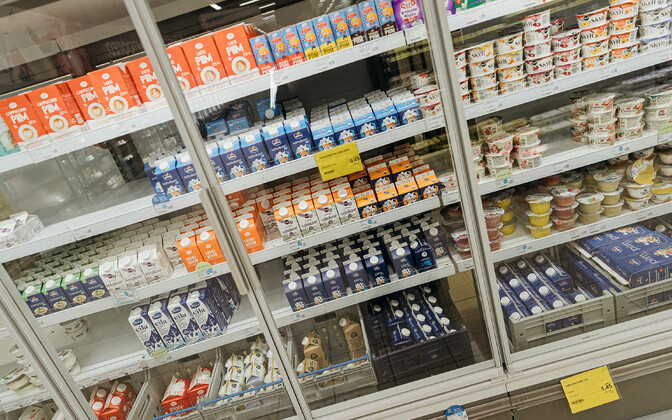Prices of key food products continue to rise, or have stabilized but at a high level, according to agricultural market analysis by the agricultural and food market center (Põllumajandus ja toiduturg) for the second quarter of 2025 (Q2 2025).
The analysis examined milk, butter, pork and beef, eggs, cereals and berries as the main food items and found rises in virtually all categories, save for cereals, which have seen a price fall in the past quarter.
The main drivers of price rises are increasing energy and labor costs and the overall international situation in agricultural product markets, the analysis found.
Milk prices rose by 2.5 percent in the second quarter, while milk sold in plastic bags rose by 7.1 percent in price, on year to the same quarter. Milk prices for products sold in Tetra Pak packaging rose even more in that time frame, by nine percent. Inflation here was mainly influenced by rising production costs (including packaging, energy and labor) and the higher price of raw milk, compared with last year.
Butter prices have stabilized, albeit at a high level. In Q2 2024, the average price of butter stood at approximately €6.32/kg, but as of Q2 2025, the figure had risen to €8.08/kg. Here, too, higher energy and labor costs made their effects known, as well as a general fall in worldwide milk production.
In other categories, price of pork has been rising compared with the first quarter of this year, while the price of feed barley has remained constant. The price of a pork carcass stood at €1.80/kg in the first half of the year but had risen to more than €2/kg in Q2 2025. The threat of African swine fever propagating in Europe, which has been leading to market instability, is likely a factor here, the Knowledge Center noted.
Meanwhile the price of beef has risen by more than 28 percent on average over the past three months. The purchase price of beef carcasses rose to around €5.50/kg, compared with around €3.50/kg at the start of the year – a X percent rise and the highest level for a decade.
Livestock diseases again may be a factor here, as well as the regular rise in demand in the summer barbecue season.
As noted, only cereals saw a price drop, from among the food sectors studied. This includes cereals intended for human consumption, such as wheat, and those intended as animal fodder, such as barley.
The purchase price of wheat fell to around €200 per ton in Q2 2025, mainly as a result of a fall in the price of fertilizer.
The poor spring and summer weather has contributed greatly to high berry prices, with no fall expected in the coming months. Garden strawberries currently cost about €10/kg. A large part of the crop has spoiled thanks to waterlogged fields in South Estonia, the research noted.
The fall in feed prices has not exerted any downward pressure on egg prices, which have remained stable between Q1 and Q2 this year. Any price difference here mainly relates to free range versus battery farmed hens; the producer price for organic eggs currently stands at about €2.50 for ten eggs, compared with a producer price for eggs from barn hens of below €1.50 for 10.
The agricultural and food market center has been collecting, processing, and storing agricultural market data since January 2024, to monitor, analyze, manage, and ensure transparency in the agricultural market. The center falls under the regional and rural affairs ministry’s remit.
—
Follow ERR News on Facebook, Bluesky and X and never miss an update!
